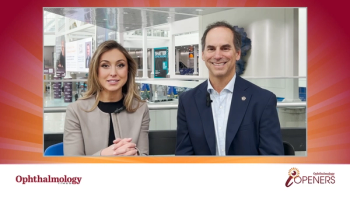
Online coding seminar helps unravel differences between E/M and eye codes
Ophthalmologists should familiarize themselves with the differences between evaluation and management (E/M) codes and eye codes, so that whichever set of codes is used is appropriately documented to ensure proper reimbursement, according to L. Neal Freeman, MD, MBA, FACS, a certified specialist in physician coding.
During an interactive Web seminar presented by Ophthalmology Times in October, Dr. Freeman, who is also a practicing ophthalmic surgeon, described some of the advantages of using eye codes instead of E/M codes-simplicity of choice and simplicity of application. Eye codes are broken down into four categories: Comprehensive new patient (92004); comprehensive established patient (92014); intermediate new patient (92002); and intermediate established patient (92012).
"Physicians need to understand what constitutes a comprehensive ophthalmologic service and how it differs from an intermediate ophthalmologic service," said Dr. Freeman, president and founder of CPR Analysts (
"Initiation of diagnostic and treatment programs may be as simple as a refraction [for diagnosis of refractive error] and prescribing glasses [for the treatment of the refractive error]," Dr. Freeman explained.
An intermediate ophthalmologic visit involves the evaluation of a new or existing condition that is complicated with a new diagnostic or management problem. It includes the patient history, general medical observation, and external ocular and adnexal examination, he noted.
"From the payer perspective, eye codes have certain requirements determined by the state and the payer," Dr. Freeman said. "E/M codes are national and recognized by all payers."
E/M codes
The E/M categories are broken down into four areas: office/outpatient services (new patient 99201-99205 and established patient 99211-99215), inpatient services, consultations (office/outpatient and inpatient), and emergency services.
The key components to an E/M visit are the documentation of the history, examination, and the medical decision-making. The history should include the patient's chief complaint; history of the present illness; review of systems; and medical, family, and social history. The examination can include 14 elements. The medical decision-making is determined by the number of diagnoses or management options, the amount/complexity of the data, and risk. Dr. Freeman also covered what constitutes a consultation and how to document a consultation appropriately for appropriate reimbursement. For information on upcoming Ophthalmology Times online seminars, visit
Newsletter
Don’t miss out—get Ophthalmology Times updates on the latest clinical advancements and expert interviews, straight to your inbox.













































